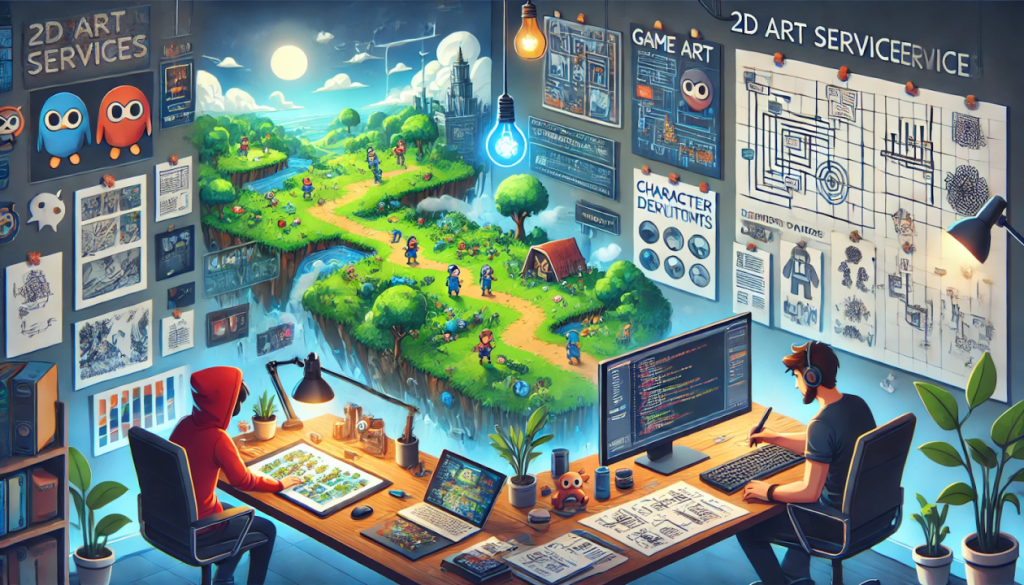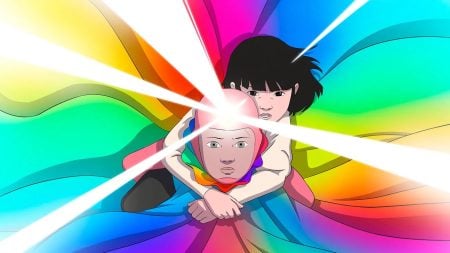In today’s fast-paced game development landscape, visual storytelling is no longer a luxury—it’s a necessity. Games need to be visually striking and narratively cohesive from the first concept sketch to the final on-screen render. This is where 2D art services become not just helpful, but essential. These services form the visual backbone of many successful games and play a pivotal role in accelerating and streamlining the development process.
When developers embark on building a new game, one of the first things they look for is a way to convey the game’s theme, world, and characters. This is typically where video game concept artists come into the picture. These artists create initial sketches, mood boards, and environment ideas that set the visual direction for the entire game. By leveraging professional 2D art services at this early stage, studios can establish a cohesive artistic vision quickly, which helps reduce miscommunication between creative and technical teams later on.
The benefit of 2D art services doesn’t stop at concept art. Once the vision is established, these services expand into areas like character design, environment detailing, props, UI elements, and even in-game assets. Every element that appears on-screen must be carefully crafted, stylized, and optimized for gameplay, and 2D art teams are specially trained to handle this across multiple art styles and genres. Whether it’s a hyper-realistic post-apocalyptic world or a whimsical cartoon universe, 2D artists help shape the visual tone and consistency of the game.
“An aligned visual style reduces rework by up to 30%, saving both time and money in production.” This kind of efficiency is crucial in an industry where deadlines are tight and budgets can quickly spiral out of control. Game developers often face the challenge of iteration, making changes based on internal feedback, gameplay requirements, or user testing. With a dedicated 2D art service partner, iterations become faster because the creative team already understands the game’s brand language and visual goals. This shortens the communication loop and accelerates the production timeline.
For indie developers and mid-sized studios, outsourcing 2D art services is also a strategic and financially sound move. Instead of maintaining a large in-house team, studios can work with external art specialists on a project basis, ensuring top-tier quality without long-term overhead costs. At Juego Studios, for example, a client can get access to a pool of seasoned video game concept artists who have worked on global titles. These artists bring not just artistic flair but also a deep knowledge of what works visually in various genres, platforms, and audiences.
Furthermore, these services are often bundled with art direction support, which helps small teams keep their visuals on track even without an internal art lead. For large AAA studios, 2D art services can integrate into an existing pipeline, handling volume-heavy tasks such as background painting, sprite creation, and UI design, while the core team focuses on gameplay and mechanics.
It’s also important to note that high-quality 2D art impacts marketing and community engagement. The promotional phase of a game often starts long before launch, and having professionally designed 2D assets, from posters to character reveals, can significantly boost a game’s pre-launch traction. Social media teasers, trailers, and merchandise designs all stem from the same initial 2D art base, meaning this service impacts not just development, but also branding and user acquisition.
“Games with cohesive visual branding generate up to 40% more engagement on social platforms.” This makes 2D art services not just a support system, but a growth enabler for studios looking to stand out in a crowded market.
To sum up, 2D art services streamline game development by providing a clear visual direction early on, reducing production errors, speeding up iterations, and ultimately enhancing the final user experience. From the hands of skilled video game concept artists to the broad application of art across UI and marketing, these services are indispensable for any game studio looking to develop a polished, immersive, and commercially successful product.
Emily Henry writes for UKWritings Reviews and Write My Research Paper. She writes articles on many subjects including writing great resumes. Emily is also an editor at State Of Writing.




![‘Jay Kelly’ Review – Noah Baumbach Makes A Case For The Magic Of Movie Stardom [NYFF 2025] ‘Jay Kelly’ Review – Noah Baumbach Makes A Case For The Magic Of Movie Stardom [NYFF 2025]](https://cdn.geekvibesnation.com/wp-media-folder-geek-vibes-nation/wp-content/uploads/2025/11/Jay-Kelly-JKELLY_20240523_15320_C2_R-300x180.jpg)

